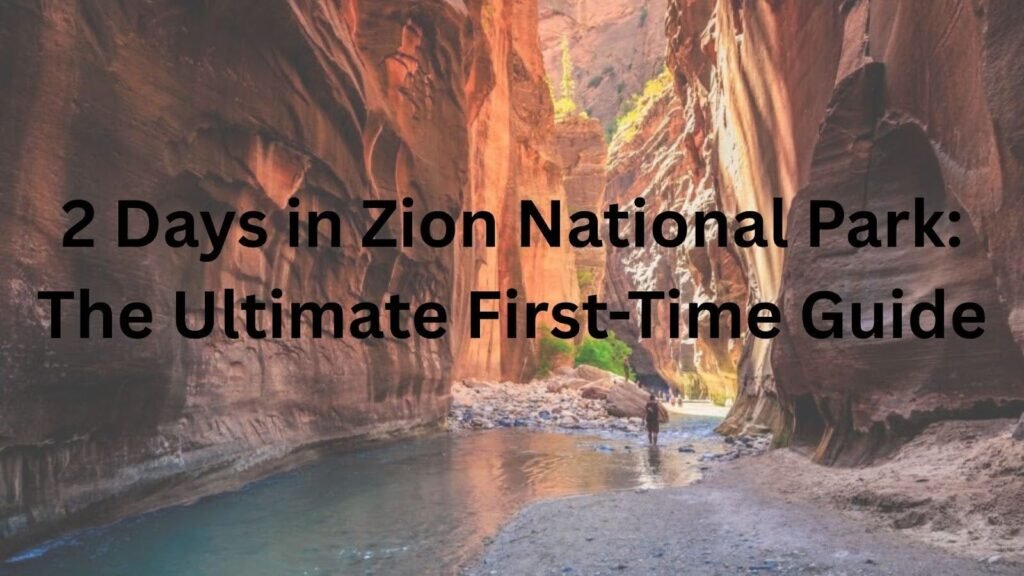Imagine standing at the base of towering red rock walls that reach 2,000 feet into the bright blue sky. The turquoise Virgin River flows peacefully beside you, cutting through canyons that took millions of years to form.
Zion is the third most visited national park in the United States, and for good reason. The park offers some of the best hiking trails in the country, from easy riverside walks to challenging climbs with views that will take your breath away.
This guide will help you make the most of 2 days in Zion National Park. You’ll learn which trails to hike, when to visit, where to stay, and how to avoid the biggest crowds. Whether this is your first visit or you’re coming back for more, these two days will show you the very best of what Zion has to offer.
Planning Your Visit to Zion National Park
Good planning makes all the difference when visiting Zion. Knowing when to go, how to get around, and where to stay will help you have a smooth and enjoyable trip.
Best Time to Visit
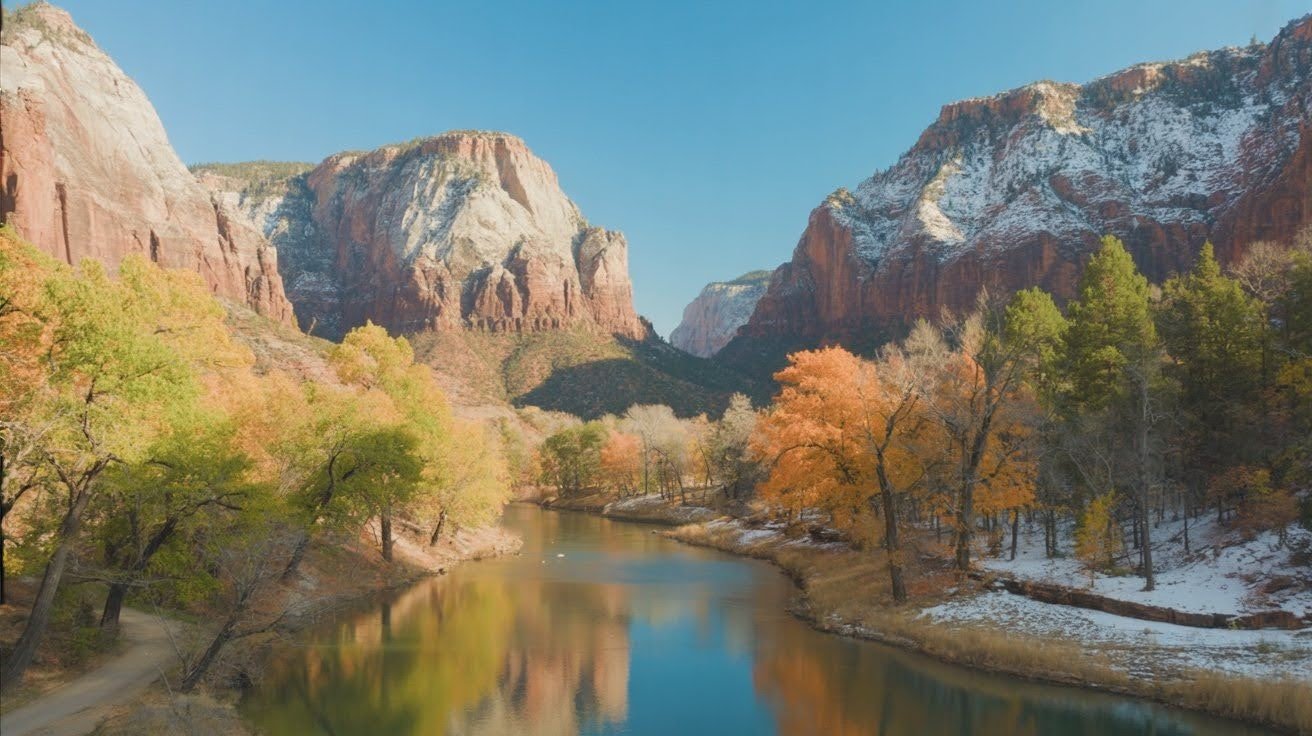
Spring brings wildflowers and pleasant temperatures to Zion, but some trails may close due to high water in the Virgin River. April and May are great months if you don’t mind the possibility of trail closures. The weather is comfortable for hiking, with temperatures in the 60s and 70s.
Summer is the busiest time at Zion. Temperatures often climb above 100°F, making midday hikes very challenging. If you visit between June and August, plan to hike early in the morning or late in the afternoon. Fall is the sweet spot for most visitors. September and October offer perfect hiking weather with fewer crowds and low water levels in the river. Winter sees the fewest visitors, but temperatures drop, and snow can cover some trails.
Getting There and Around
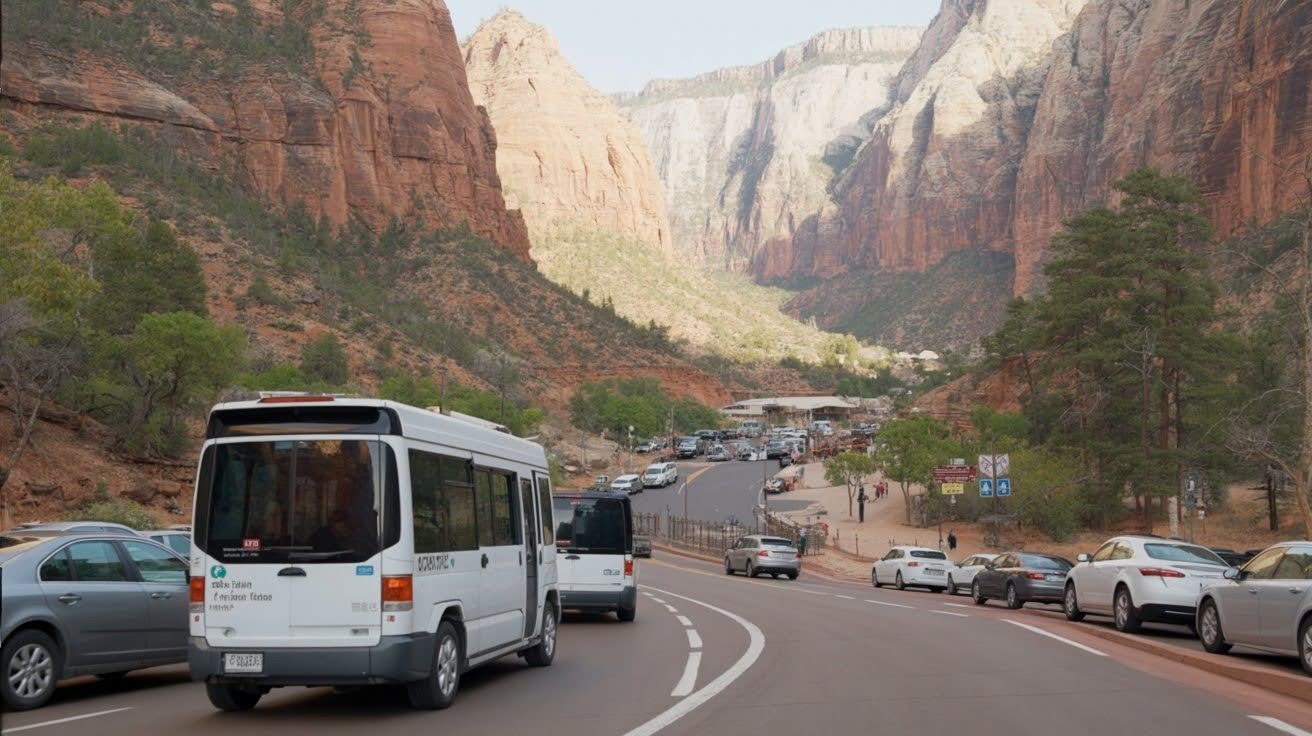
The closest major airports are Las Vegas (2.5 hours away) and Salt Lake City (4 hours away). Most visitors fly into Las Vegas and rent a car for the drive to Zion. The park requires all visitors to use a free shuttle system from March through November to access Zion Canyon Scenic Drive, where most of the popular trails begin.
Parking fills up incredibly fast during busy seasons. If you want to park at the visitor center, you need to arrive by 6:30 AM. Otherwise, park in the town of Springdale and take the free town shuttle to the park entrance. The trails on the east side of the park can be reached by personal vehicle all year long.
Where to Stay
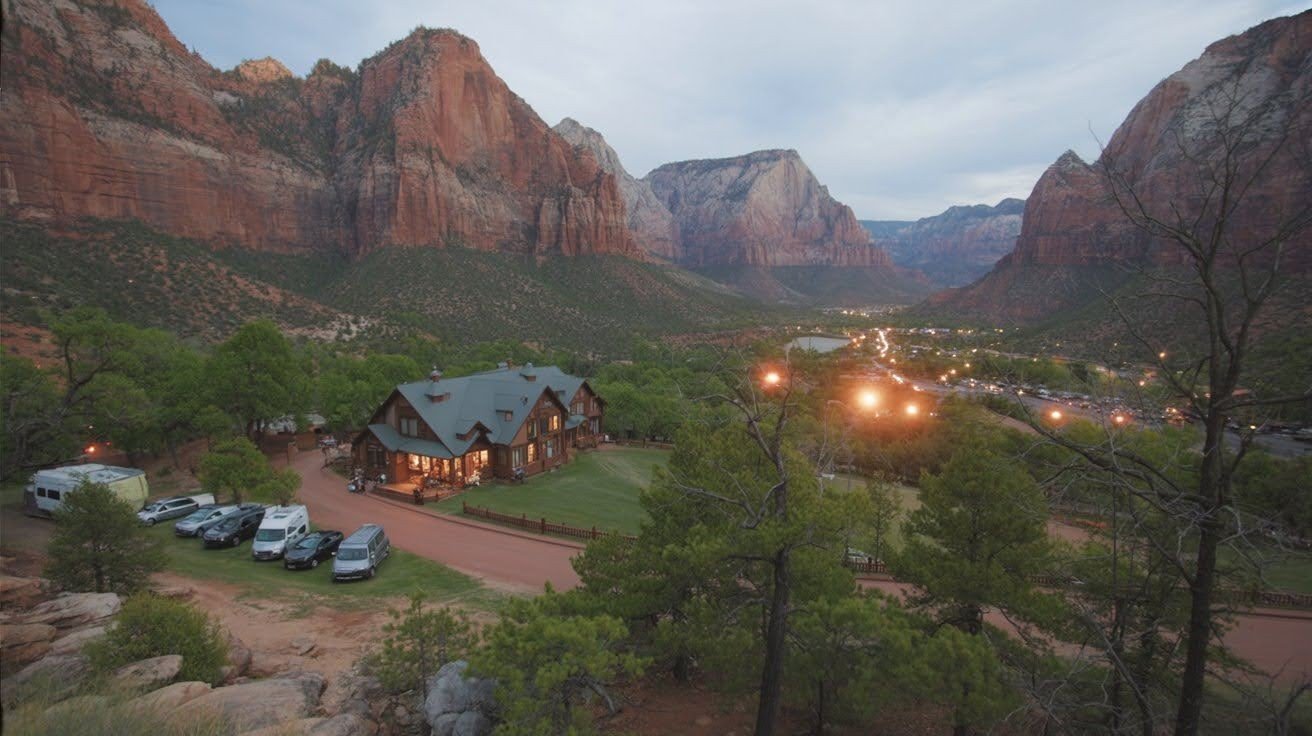
Inside the park, Zion Lodge offers the most convenient location, but rooms book up months in advance. The Watchman Campground is another option inside the park for tent and RV camping. Reservations for both fill quickly during peak season.
The town of Springdale sits right outside the park entrance and offers dozens of hotels, motels, and vacation rentals. Staying in Springdale means you can walk to the park entrance and easily access restaurants and shops. Book your accommodations at least three to six months ahead if you’re visiting during spring, summer, or fall.
Day 1: Zion Canyon and Angels Landing
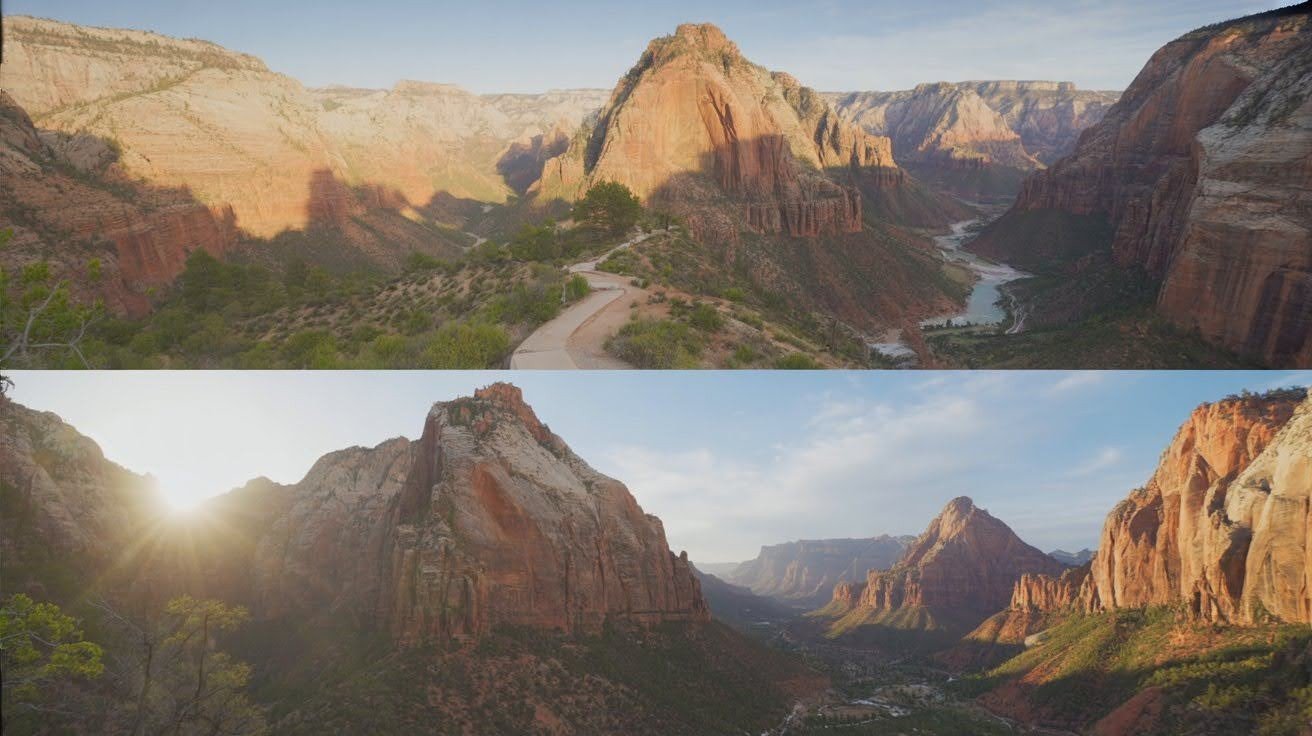
Your first day in the park focuses on the main canyon area, home to Zion’s most famous trails. Start early to beat the heat and the crowds.
Morning: Scout Lookout Trail (With Optional Angels Landing Extension)
Catch the 6:30 AM shuttle to The Grotto stop and begin your hike to Scout Lookout. This 4-mile round-trip trail climbs 1,100 feet and takes most hikers about 3 hours. The trail leads you through Refrigerator Canyon, a shaded section that offers relief even on hot days, then up a series of 21 steep switchbacks called Walter’s Wiggles.
Scout Lookout sits at the top of the wiggles and provides incredible views of Zion Canyon below. If you won a permit through the Angels Landing lottery system, you can continue on the final half mile to the summit. This section involves climbing with the help of chains bolted into the cliff face. The drop-offs are serious, and this part is not for anyone afraid of heights. If you don’t have a permit or prefer to skip the chains, continue on the West Rim Trail for similar views without the danger.
Afternoon: Canyon Overlook Trail
After lunch, drive to the east side of the park through the Zion Mount Carmel Tunnel. The Canyon Overlook trailhead sits just past the tunnel exit. This easy 1-mile round-trip hike involves minimal climbing and takes about an hour.
Parking at the trailhead is limited to about 20 cars, so you may need to wait for a spot or visit during off-peak hours. The trail leads to a viewpoint overlooking Pine Creek slot canyon and the famous switchbacks of Highway 9. Keep your eyes open for bighorn sheep, which are often spotted on the rocky slopes around this trail.
Evening: Watchman Trail at Sunset
Head back to the visitor center area for the 3-mile round-trip Watchman Trail. This moderate hike offers the best sunset views in the entire park. The trail climbs gradually to a viewpoint looking back at the main canyon and the massive Watchman Peak.
Arrive about an hour before sunset to give yourself time to reach the viewpoint. The light turns the red rocks into brilliant shades of orange and pink. After dark, the lack of light pollution makes Zion perfect for stargazing. On clear nights, you can see the Milky Way stretching across the sky.
Day 2: The Narrows and Observation Point
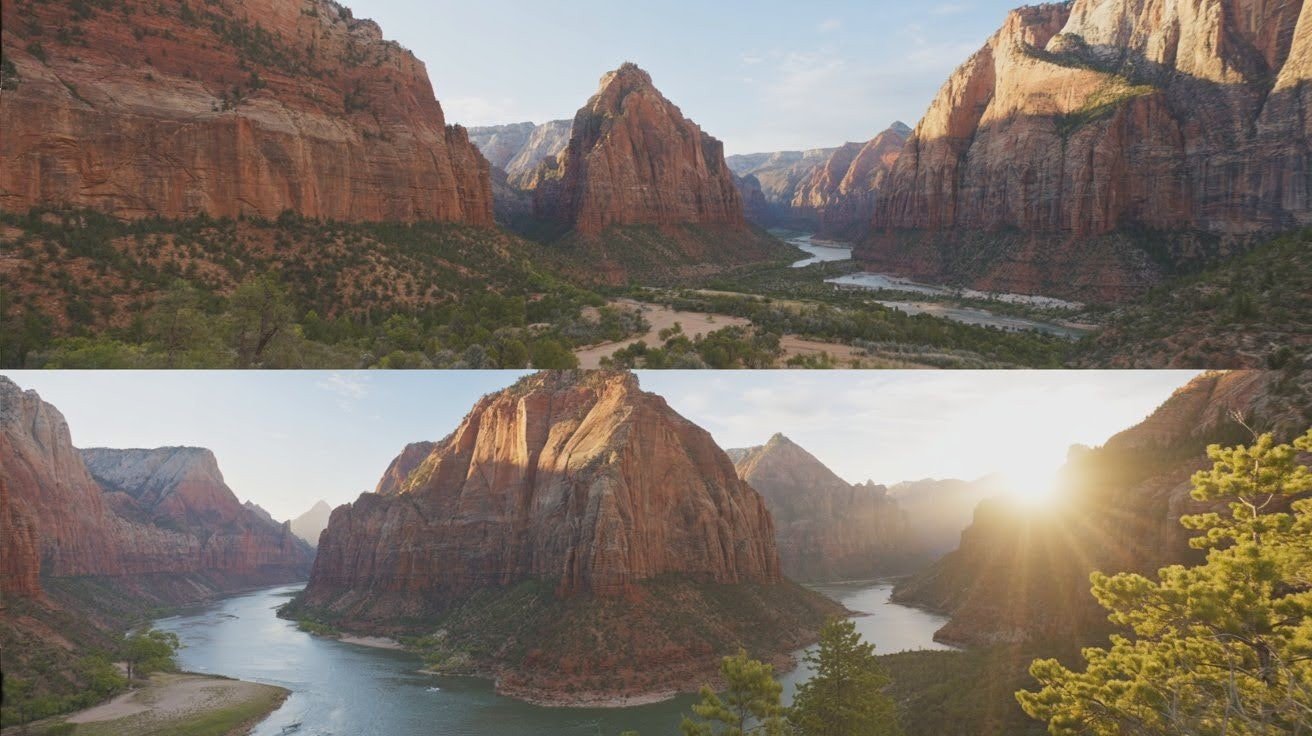
Day two takes you into Zion’s most unique environment and up to the highest viewpoint in the park. Both hikes offer completely different experiences from your first day.
Morning: The Narrows
Take an early shuttle to the last stop at Temple of Sinawava and walk the paved Riverside Walk to reach the Narrows entrance. This hike involves walking directly through the Virgin River as towering canyon walls rise 1,000 feet on both sides. You can hike anywhere from 2 to 10 miles into the canyon, but most visitors turn around at Wall Street, about 6 miles round-trip.
The water depth changes throughout the season and even throughout the day. Spring runoff can make the river too dangerous to enter. Summer offers the warmest water temperatures but also brings the risk of flash floods. Always check current conditions at the visitor center before starting. If cyanobacteria or high water close the trail, you’ll need to choose an alternative hike.
Afternoon: Observation Point via East Mesa Trail
Drive 50 minutes to the East Mesa Trailhead on the east side of the park. This 6.7-mile round-trip trail gains only 695 feet in elevation, making it much easier than the traditional Observation Point route from the canyon floor. The trail passes through a pine forest before opening up to views of the canyon.
At 6,521 feet, Observation Point is the highest viewpoint overlooking Zion Canyon. From here, you look down on Angels Landing and can see the full sweep of the canyon below. Many hikers consider these views even better than Angels Landing because you can see so much more of the park. The lack of crowds at this viewpoint makes it feel more peaceful, too.
Evening: Canyon Junction Bridge Sunset
For your final evening, head to the Canyon Junction Bridge area near the visitor center. Walk along the paved Pa’rus Trail to find sandy beach spots along the Virgin River. These areas offer classic views of the river flowing past the Watchman Peak.
This relaxing end to your two days lets you reflect on everything you’ve experienced. Afterward, head into Springdale for dinner at one of the local restaurants. Many offer outdoor patios where you can enjoy the warm evening air.
Essential Tips for Your Zion Visit
Planning helps you avoid common problems that trip up first-time visitors. Here are the most important things to know before you go.
- Permits and Fees: Angels Landing requires a permit obtained through a lottery system. You can enter the lottery the day before your hike or in a seasonal lottery months in advance. The park entrance fee is $35 per vehicle or free with an America the Beautiful Pass.
- What to Pack: Sun protection is critical in the desert. Bring sunscreen, a hat, and sunglasses. Wear proper hiking boots with good ankle support. Pack layers since morning and evening temperatures can be 30 degrees cooler than midday.
- Narrow Specific Gear: Neoprene socks keep your feet warm in cold water. A waterproof dry bag protects your phone and snacks. Trekking poles help you balance on slippery rocks. Wear a swimsuit under your hiking clothes. You can rent all of this from Zion Outfitters in Springdale.
- Beat the Crowds: The first shuttle departs at 6 AM during summer and 7 AM the rest of the year. Taking the first shuttle gives you trails almost to yourself. Crowds peak between 10 AM and 2 PM.
- Stay Hydrated: Carry plenty of water on every hike. Temperatures above 100°F are common in summer, and there’s little shade on many trails. Bring at least 3 liters per person for longer hikes.
Having 2 days in Zion National Park gives you enough time to see the park’s biggest highlights without feeling rushed. You’ll experience iconic hikes like Angels Landing and The Narrows while also visiting quieter spots that many visitors miss.
Conclusion
Two days give you a solid introduction to everything that makes Zion special. You’ll hike through rivers, climb to incredible viewpoints, and watch the sunset paint the canyon walls in brilliant colors.
Remember that weather and your fitness level might require changes to this itinerary. Don’t push yourself beyond your comfort zone, especially on trails with serious exposure. If you have extra time, consider visiting Kolob Canyons in the northwest section of the park or hiking to Emerald Pools.
Spending 2 days in Zion National Park will give you memories that last a lifetime. The red rocks, narrow canyons, and incredible views make this one of America’s most special places.
Frequently Asked Questions
Can I Complete the Narrows Without Special Equipment?
You can hike The Narrows in summer with regular hiking boots and quick-dry clothing, but neoprene socks and trekking poles make the experience much more comfortable and safe. Rentals are affordable in Springdale.
Are There Kid-Friendly Hikes in Zion?
The Pa’rus Trail is fully paved and stroller-friendly. Lower Emerald Pool offers an easy 1.2-mile walk suitable for young children. Riverside Walk is another paved option that gives kids a taste of the canyon scenery.
What Should I Do If I Can’t Get an Angels Landing Permit?
Hike to Scout Lookout for great views without needing a permit. Observation Point via East Mesa Trail offers even better views than Angels Landing. The West Rim Trail from Scout Lookout is another excellent option.
Is Cell Phone Service Available in Zion?
Cell service is very limited throughout the park. Download offline maps and trail information before you arrive. The visitor center offers WiFi, and some areas near Springdale may have spotty service.
Can I Bring My Dog to Zion National Park?
Dogs are not allowed on any trails except the Pa’rus Trail, which is paved. Pets cannot ride the shuttle buses. The park has strict rules to protect wildlife and maintain the experience for all visitors.

